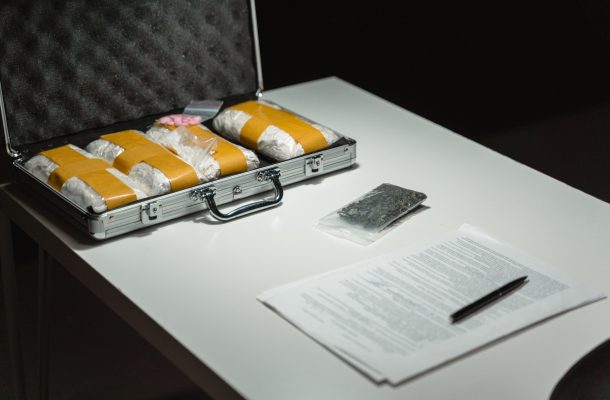Arvanitakis on the war on drugs: why have we failed?

The first time I arrived in Bogota, Colombia, was in 2009. At the time, the conflict between the FARC (a left-wing guerrilla and terrorist organisation), right wing paramilitary groups (funded by wealthy landowners and often supported by government forces) and the Colombian military, was in full swing.
While life in Bogota and other cities I visited seemed relatively normal, the conflict continued to rage in other parts of the country.
I was researching citizenship and was comparing issues of identity and empowerment across different nations. In Colombia, this included interviewing several social justice advocates focused on exposing government corruption and links to the drug trade.
One day after planning a round of follow up interviews, everything was cancelled as one of the advocates had received intelligence that she was being targeted for assassination. She had no choice but to flee the country.
This was not my only exposure of to the Colombian drug trade. I met families whose children had disappeared, others who had family members murdered and farmers who had been forced to leave their homes. I met other victims: those missing limbs from stepping on improvised landmines and union leaders who had received death threats and spoke of colleagues who had ‘disappeared.’
One of the things I learnt was that people are always guarded when talking. This is because anybody suspected of siding with one group is a target for another. I have never been one to experiment with ‘hard’ drugs, but after witnessing the human cost of the drug trade at its source, I vowed I would never go near anything like it.
I fell in love Colombia, its people and its culture but was also heartbroken as I saw the impact of the drug cartels and the failed ‘war on drugs’ everywhere.
This was more than ten years ago and today Colombia has a booming tourism industry and becoming a destination for its rich culture and natural beauty. Despite this, many parts of the nation are still subjected to extreme violence and kidnappings.
While the homicide rate has fallen from its highs in the early 1990s (at 84 per 100,000 people) to just over 25 per 100,000 in 2020, it is still amongst the highest in the world.
The drug trade…
A 2019 Australian Criminal Intelligence Commission (ACIC) report confirmed that despite decades of the war on drugs, the three primary cocaine producing countries in 2017 were Colombia (which accounted for 70 per cent of global coca bush cultivation – the key ingredient to cocaine), Peru (20 per cent) and Bolivia (10 per cent). In fact, all three countries recorded increases in the area under coca bush cultivation in 2017 with a 31 per cent increase in the estimated quantity of cocaine manufactured in Colombia between 2016 and 2017.
For peasant farmers in places like Colombia, being involved in the drug trade is a double-edged sword. They risk being caught in the middle of the conflict, but coca production can offer a guaranteed source of income even though they receive only a fraction of price associated with the ultimate sale.
Ironically for government policy makers and police, growing coca acts as a type of insurance policy that shields the farmers from the vagaries of the global trade in primary products.
Australia, like many other wealthy nations are the target. A recent News Limited investigation claimed that Australia has the highest per capita use of cocaine.
We are an attractive source for drug importation due to the high level of demand resulting in healthy profit margins for importers. In fact, it is estimated that Australians spend approximately $11.3 billion annually on illegal drugs. The ninth annual National Wastewater Drug Monitoring Program found methylamphetamine was the most popular illicit drug.
The true cost of a gram of coke in Australia
Recently we witnessed a Melbourne socialite embroiled in a social media slip-up consuming an unnamed white substance.
I really have no interest in the gossip columns, but whenever I see a high-profile individual ‘snorting a white substance’, I cannot help thinking of the true cost of the drug trade: it is not the ‘street price per gram’, but ultimately the life of an innocent individual in a country such as Colombia.
To put it bluntly, it is our cultural habits of occasionally ‘dabbling’ with party drugs that drive the violent drug trade and ultimately responsible for every murder associated with it. The main reason the war on drugs has failed is because of the demand side of the equation.
What we need to realise that there is a ‘trail of blood’ that leads from a line of cocaine that so many Australians seem to enjoy to the 50-year conflict in Colombia.
This is not an exaggeration: while numbers are hard to come by it is estimated that over 20,000 people were murdered in Colombia last year as a direct result of the drug trade. It is a conflict that has seen teachers, trade unionists and human rights activists slaughtered in their hundreds.
This does not even account for the human, social and economic impacts of addiction in Australia.
Personally, I think people can undertake the pursuits that they want, and I am not here to judge. In saying that, we should not pretend that our actions have no impact – and in this case, it is an action that fuels a forever war.
And if we also link the drug trade to places such as Afghanistan, we should also realise that we are not only funding the drug cartels, but also potential terrorist organisations.
There are creative alternatives to dealing with the war on drugs but without each of us taking responsibility for the consequences of our actions, illegal drug and terrorist organisations will continue to thrive.
Professor James Arvanitakis is the Executive Director of the Australian American Fulbright Commission – one of the world’s most prestigious international education and cultural exchange programs.















Alan Stevenson
September 12, 2021 at 11:50 am
The reason drugs are imported into Australia is that Australians are prepared to buy them and hence aid and abet the smugglers. Instead of being treated like victims, drug users should be taught that they are the problem – they may have been tricked or shamed into using, but it is their actions which are the cause of the epidemic. Just claiming that peer pressure or ‘experimentation’ was the reason is not enough. We should be held responsible for our own actions if we are over the age of consent.